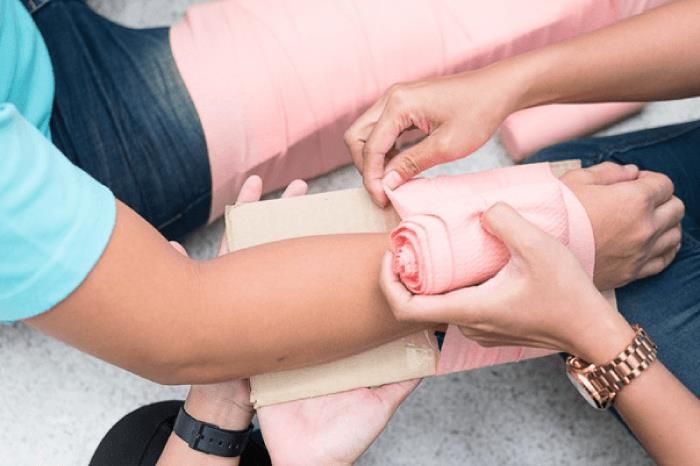Splinting Techniques and Principles of Splinting of the Body
What is a Splint Used for?
It is a piece of medical apparatus that is used to keep an injured body part from moving and to protect it from more harm. By placing the splint perfectly, a rigid splint will help ease the pain of an injury by making sure that the wounded area does not move. It is often used for stabilizing a broken bone while the injured person is taken to the hospital for more advanced treatment. A splint can also be used if you have a severe sprain or strain in one of your limbs.

Key Principles of Splinting of the Body:
There are some important characteristics of splints which are presented in the following:
- A splint immobilizes and supports an injured body part in a functional position.
- Splints are applied in the management of fractures, sprains, dislocations, strains, or patients with a degenerative disorder.
- Splints can be prepared by any material e.g. newspapers, umbrellas, magazines, walking sticks when they can be used for emergency purposes. For longer purpose use, splints are prepared from inflexible material such as plastic, metal, wood, plaster of Paris, etc.
- Splints can be made of plaster or a more pliable thermoplastic material. They should be padded so that they do not cause pressure or skin abrasions and breakdowns.
- The healthcare professional fits the client with a splint and then overwraps it with an elastic bandage applied in a spiral mode. This helps to promote circulation and maintain the position of the splint.
- Other types of splints include canvas splints, soft or hard ready-made splints, soft variety splints that support an injured upper extremity, and commercial soft splints padded and contoured to fit a client’s extremity. Velcro straps on the splint attach the splint to the injured extremity.
- The client would use a splint when a musculoskeletal condition:
- Does not require rigid immobilization,
- Causes a large degree of swelling,
- Requires special skin treatment.
Application Rules for Splints or Splinting Techniques:
There are some necessary application rules for splints which are listed in the following:
- The padding of the splint must be adequate to prevent compression of the splint on the blood vessels and nerves.
- The splint must be wide enough to extend beyond the edges when it is in position.
- The splint must be long enough to give support to the full length of the pat that is to be immobilized.
- Splints are used to correct deformities must be firm and strong.
- Skin surfaces should be separated and padded to prevent maceration of the tissues due to moisture
- The joint above and the joint below the involved area are to be immobilized because the movement in either joint may cause pain and cause separation of the bone fragments.
- Splints require daily attention.
- No complaints of discomfort should be ignored especially of pressure and burning pain.
- Rubber rings or cotton pads may be used to relieve the pressure.
- If a blister occurs over any area, plaster should be opened, the fluid removed and a dry sterile dressing is applied.

Maria Khatun Mona is a Founder and Editor of Nursing Exercise Blog. She is a Nursing and Midwifery Expert. Currently she is working as a Registered Nurse at Evercare Hospital, Dhaka, Bangladesh. She has great passion in writing different articles on Nursing and Midwifery. Mail her at “maria.mona023@gmail.com”
